How Much & How Often to Water Orchids: Signs, Tips, & Factors
-

- Last updated:
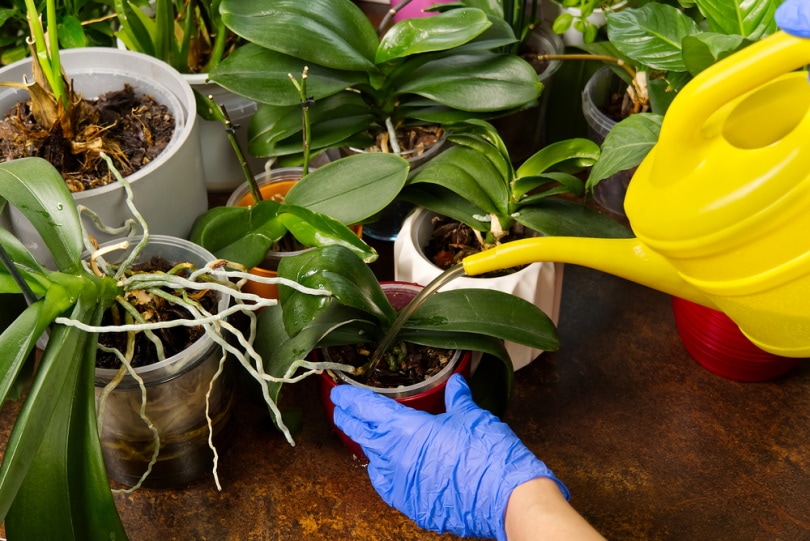
Growing orchids is challenging. Unlike other exotic plants, orchids require a special growth medium and just the right quantity of water. This leads us to several questions. How much water does an orchid need? And how often should you water an orchid? Read on to understand the watering demands of an orchid.

The 4 Signs That Orchids Need Water
1. The Potting Mix Is More than an Inch Dry
Orchid plants like dry and partially damp growth mediums. If the potting mix is extremely dry, orchids will suffer. To avoid that, dip a pointed pencil in the medium to determine how dry it is. If it is more than an inch dry, it is watering time.
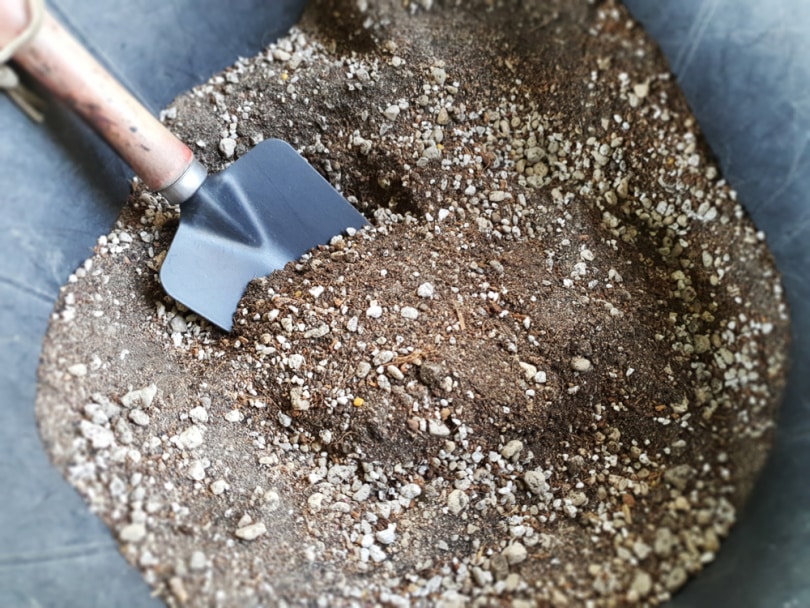
2. Wrinkly and Wilting Leaves and Pseudobulbs
Pseudobulbs are orchids’ storage organs and, when filled with water and nutrients, are plumpy and firm. If pseudobulbs and leaves wrinkle out and wilt, the plant needs water. However, don’t confuse natural wrinkling with lack of water. During winter, some orchid species‘ pseudobulbs form wrinkles. This is because they discharge their contents to boost growth in hard times.
3. The Plant or Pot Feels Lighter
Since most plants are grown in light plastic containers, you can note weight changes when you water orchids. A light container means the plant needs water.
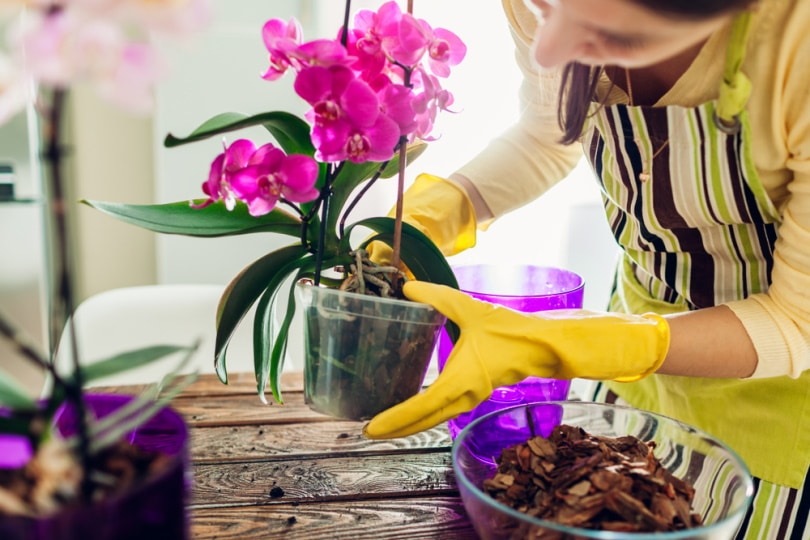
4. The Roots Are Almost White
Your orchid does not require water if the potting mix is dry so long as the roots are still green. Water orchids if the potting medium is dry and the roots are silver or gray.

How Often Should I Water Orchids?
The best practice when growing orchids is to water them once a week in the winter and after every 3 days in the summer. But a good root shower once a week is enough for indoor plants. Increase watering frequency on outdoor plants to twice a week.
What to Consider When Watering Orchids?
- Weather: In summer, dry weather sucks out water from the growing medium, and frequent watering is inevitable. Cold winter months and the inactive state of the plant reduce water intake and needs.
- Growing Medium: Orchids grow in a special growing medium with different properties. Mediums with high water retention capacity require less watering.
- Orchid Species: Broad-leaved species like showy orchids require more water because a higher leaf surface area increases the transpiration rate. Also, terrestrial or semi-terrestrial orchids require more moisture than epiphytes. Epiphytes are orchids that grow on trees.
- Location of the Plant: Outdoor orchids grown should be watered more frequently due to the exposure to tough weather compared to indoor plants. Indoor conditions are stable and less severe, limiting evaporation and transpiration.
- Airflow: Orchids thrive when adequately spaced. Unfortunately, exposure to windy conditions increases transpiration and thus watering needs.

Common Mistakes When Watering Orchids
No one is perfect, and gardeners can make mistakes when watering their orchids.
1. Overwatering
Overwatering will cause root rot, leaving the plant without the means to take in water. This eventually kills the plant. Furthermore, dying roots are the entry point of pathogens.
If the leaves turn yellow, bright green roots change to dark brown, and the growing medium is soggy, you will notice overwatering.
How do you avoid overwatering? Always use your finger or a pencil to determine how deep the moist medium is. Reduce the watering frequency and ensure the growing pot has enough drainage holes if the medium is wet closer to the surface.
2. Watering During the Evening
Deciding on how frequently you water your orchid is essential, but the time of day is also crucial. Water your orchids in the early morning to allow the moisture to evaporate off the leaves. Avoid evenings and night hours as the water settles on the plant, which promotes fungal diseases. The best practice is to ensure orchid plants are dry heading into the night.
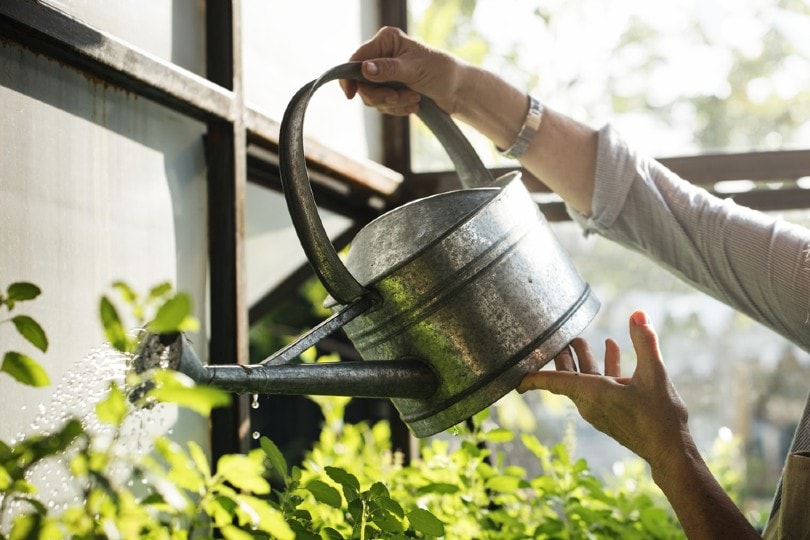
3. Low Moisture and Humidity Levels
While orchids don’t do well in overwatered soil, they still need moisture. So how do you ensure the plant has enough moisture without overwatering it? You can create a humid environment by placing the orchid’s pot in a tray of pebbles and water. Doing this increases humidity in the surrounding areas.
4. Watering Orchids from Above
Always water directly onto the soil, and avoid the leaves. If water is trapped in between the leaves, pseudobulbs and the crown initiate rotting.
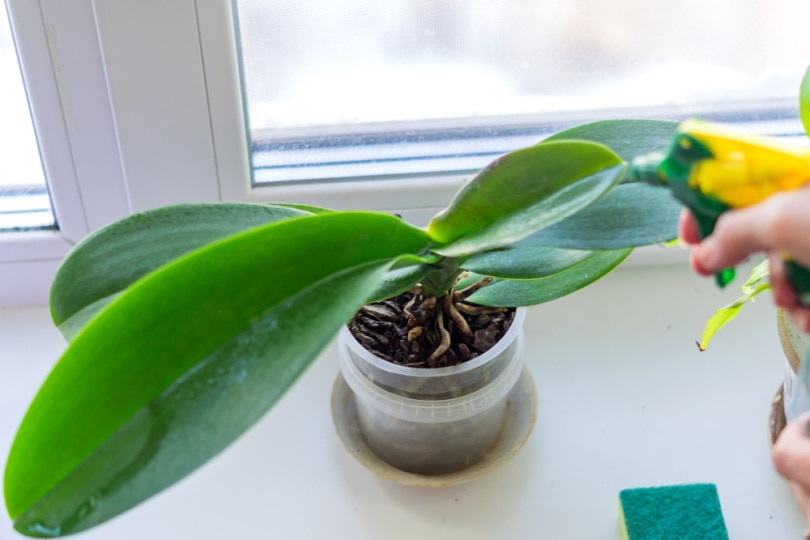
5. Leaving Orchids in Soggy Soil
Soggy medium is a no-no for orchids, and never leave them sitting in still water. The best practice is to ensure the plant is completely dry between waterings. Allow the medium and the plant to drain out excess water for about a quarter an hour. Also, discard stagnant water from the drainage plate. Some mediums may absorb water upwards through capillarity, which is indirect overwatering.
6. Using Ice Cold Water
Orchids prefer water at room temperature—never use very cold or warm water. Giving them cold water below 50F could shock the roots to death. Water orchids with water at room temperature only.
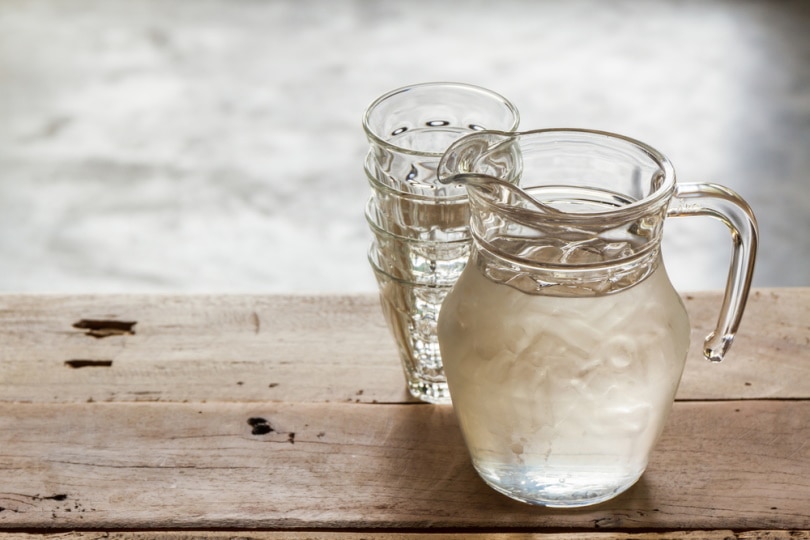
7. Using Softened Water
Softened water contains sodium ions¹ which alter a plant’s osmotic properties. This will quickly result in death.

Conclusion
Train yourself to water orchids once every two weeks. This will keep the plant moist but not dump enough to initiate root rot and choke off the plant. When doing it, you should note excess watering, which you can detect by looking at yellowing leaves. Likewise, do not use softened and ice-cold water, or water the plant from above or at night. A good orchid needs a humid environment. Achieve that by placing the pot on a pebbly tray with water.
- https://www.costafarms.com/get-growing/news/how-to-water-your-orchid
- https://www.aos.org/orchids/orchid-care/how-do-i-water-my-orchid.aspx
- https://www.thespruce.com/how-to-water-orchids-1902821
- https://doitgreen.org/topics/gardening/water-doesnt-have-kill-your-houseplants/#:~:text=Ice%20cold%20water%20will%20cause,temperature%20before%20watering%20the%20plants.
- https://www.gardeningknowhow.com/plant-problems/environmental/softened-water-and-plants.htm#:~:text=Most%20plants%20cannot%20tolerate%20high,garden%20to%20die%20of%20thirst.
Featured Image Credit: VidEst, Shutterstock
Contents
